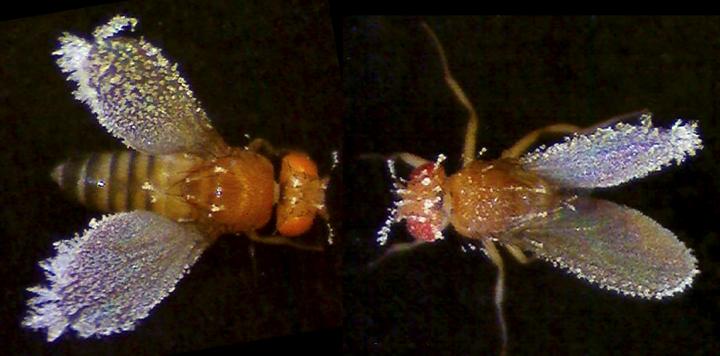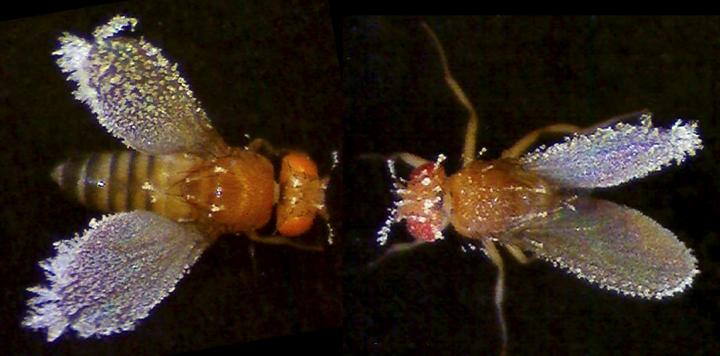
Credit: Atit A. Patel and Daniel N. Cox of Georgia State University
ATLANTA-The tiny fruit fly can help humans investigate the genetic and neural bases of detecting painful or harmful cold stimuli and offer intriguing, potential implications for human health, according to a new study.
A team of researchers led by Dr. Daniel N. Cox, associate professor of neuroscience at Georgia State University, has discovered that fruit flies have cold-sensing neurons that when activated drive specific, aversive behaviors to damaging cold, which requires the function of evolutionarily conserved ion channels known as Transient Receptor Potential (TRP) channels.
In the journal Current Biology, the researchers establish the fruit fly, Drosophila melanogaster, as a powerful genetic and behavioral model for unraveling questions about the cellular and molecular bases of damaging cold perception, which have not been well understood.
The study explores the concept of nociception, the peripheral and central nervous systems' perception of painful or potentially tissue damaging stimuli, which is generated by activating sensory nerve cells called nociceptors. This evolutionarily conserved process is critically important for survival.
Nociception, coupled with pain sensation, alerts an organism to possible environmental dangers and allows it to execute behavioral responses to protect against incipient damage. Acute and chronic pain can manifest as altered nociception in neuropathic pain states.
The study found that one of the implicated TRP channel genes called Pkd2 has been causally linked to autosomal dominant polycystic kidney disease (PKD), the most common monogenic disease in humans. Pkd2 ion channels appear to function as cold sensors and misexpression of Pkd2 can confer cold sensitivity to normally insensitive neurons. While it is not yet known if PKD patients have cold nociception defects, these new findings suggest this merits further investigation as a potential non-invasive diagnostic.
These same cold-sensing neurons also function as mechanosensors for touch, revealing that they, as well as the TRP channels identified in this study, are multimodal and raising the question of how neurons and ion channels distinguish between harmless and harmful stimuli to drive specific behavioral responses. Using sophisticated optical assays of neural activation by touch versus cold stimuli, the researchers demonstrate that these sensory neurons have different activation thresholds, with touch having a low threshold and cold having a high threshold, that ultimately determine the appropriate behavioral response.
"This new model sets the stage for uncovering evolutionarily conserved molecular control of nociception," said Cox. "It also provides a powerful genetic platform for unraveling the neural circuitry and molecular mechanisms that integrate multimodal sensory input to produce specific behaviors in response to diverse environmental stimuli."
The research team included Kevin Armengol, Atit A. Patel, Nathaniel J. Himmel, Luis Sullivan, Dr. Srividya C. Iyer and Dr. Eswar P.R. Iyer of the Cox Lab at Georgia State's Neuroscience Institute and Center for Behavioral Neuroscience, and collaborators Heather N. Turner and Michael J. Galko from MD Anderson Cancer Center.
The next steps will be to dissect the neural circuitry, additional molecular players and synaptic mechanisms that modulate cold nociception and multimodal sensory processing.
###
For more information on Dr. Daniel N. Cox and the research being conducted in his laboratory, visit http://neuroscience.gsu.edu/profile/daniel-cox/.
For more information on the Center for Behavioral Neuroscience, visit http://www.cbn-atl.org.
Media Contact
Natasha De Veauuse Brown, MPH
[email protected]
404-413-3602
@GSU_News
http://www.gsu.edu




